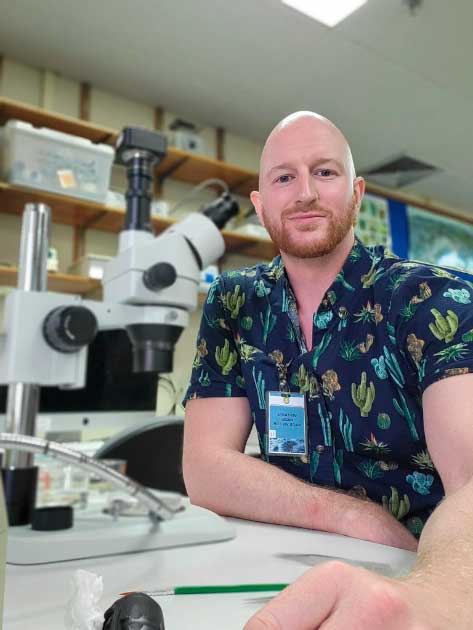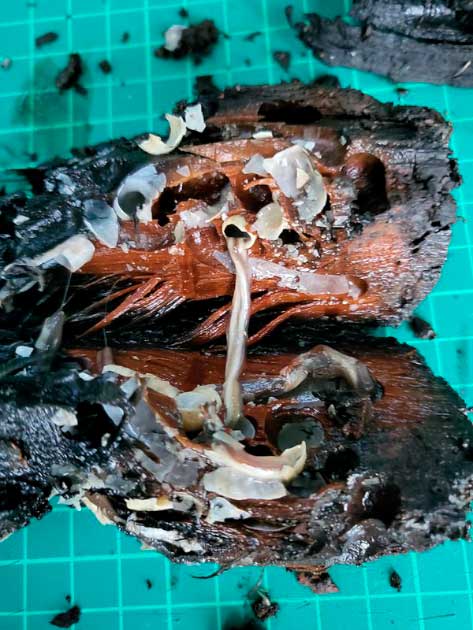
Are Sea Creatures Really Eating Captain Cook’s “Endeavour”?
Headlines read “Shipworms threaten to destroy Captain Cook’s HM Bark Endeavour,” which was wrecked off the US east coast in the late eighteenth century. However, while museum staff “believe” it's Captain Cook's legendary Endeavour, many marine scientists are having none of it!
Between 1768-1771 Captain James Cook’s ship, the Endeavour, was the first to circumnavigate the globe. Officially, Endeavour’s voyage was a journey to Tahiti to observe the 1769 transit of Venus across the sun. However, the voyage also had a “clandestine mission” since the Royal Society used the Endeavour to explore the South Pacific in the name of the British Empire.
Reuben Shipway of the University of Plymouth is an expert in wood-eating marine invertebrates. Shipway, and others, “believe” this ship is the famous British Royal Navy research vessel, the Endeavour, that safely delivered Captain James Cook on his first voyage to Australia and New Zealand. Now, according to Shipway, “aquatic termites (shipworms) might destroy the Endeavour.”

Reuben Shipway of the University of Plymouth sounded the alarm that shipworms were destroying the shipwreck tentatively identified as Captain Cook’s Endeavour. (University of Plymouth)
From Captain Cook’s Fearless Vessel to American War Service
When Captain Cook returned from his voyage of discovery in 1771 the British Navy privately sold HMB Endeavour. She was later renamed the “Lord Sandwich 2” and functioned as a prison ship during the American Revolution. Then in 1778, the British Navy sunk her in the blockade at Narragansett Bay, Rhode Island.
- Graveyard of the Caribbean: What Shipwrecks Lie In Antigua’s Waters?
- Paper Fragment on Shipwreck Reveals Blackbeard’s Crew Enjoyed Reading Pirate Stories
In February this year researchers from the Australian National Maritime Museum in Sydney announced that the Endeavour had been discovered. It was identified as “RI 2394” (the RI standing for Rhode Island). However, not everyone was/is convinced this shipwreck is actually Captain Cook’s famous Endeavour. Right after its discovery was made public, the lead research partner on the project, the Rhode Island Marine Archaeology Project ( RIMAP), said the museum’s findings were “premature.”
Feasting On the Endeavour? Or Just Another Old Ship?
Last August, Shipway dived to what he believes to be the wrecked Endeavour. He noted a honeycomb-like pattern on the ship’s planks and later analyzed the wood at Harvard University. He discovered these shapes were eaten-away wood caused by Teredo navalis, a species of invasive shipworm, better known as “termites of the ocean.”
Shipway told the Boston Globe that “one of the most important wrecks in human history is being destroyed right underneath our noses.” With over 80% of the ship having already been eaten away by the seas, and its creatures, Shipway said in a University of Plymouth statement that so long as the timbers are exposed in the open ocean the shipworms will continue to eat them.
Shipway is now considering preservation solutions for the remaining hull. Because “shipworms are an important part of the ecosystem and exterminating them is not an option,” says Shipway, he suggests submerging the surviving hull in deep sediment that shipworms can’t live in.

A shipworm in a sample taken from the shipwreck tentatively identified as Captain Cook’s HMS Endeavour. (University of Plymouth)
Definitive Proof Is Elusive For Shipwrecks, But Necessary
An article published in The Conversation in February discussed the “raging debate” over whether this is, or is not, Captain Cook’s famous ship. Dr Kathy Abbass from the RIMAP says “identifying ships is a long, arduous and painstaking process that usually takes many years and involves a host of challenges along the way.” And contrary to the actions of those who believe this is certainly the Endeavour, “at all times it is vital as a maritime archaeologist to remain objective and not fall into the trap of trying to bend evidence to fit a theory you have fallen in love with.”
- Three Ancient Shipwrecks Still With Cargo Found Off Greek Island
- Ancient African Coins Found in Australia Pose Interesting Questions About the Nation’s History
Dr Kathy Abbass says “no indisputable data” has ever been presented to the scientific community to definitively prove this is indeed Cook’s HMS Endeavour. And while the museum does publicly accept that there may “never be definitive proof,” their constant news headlines about “the Endeavour” are becoming regarded as a bit non-science, which really isn’t a good show for a museum.
However, they do state their arguments for the wreck being the Endeavour quite clearly on the Museum website.
“It is with great pride that after a 22-year program of archival and archaeological fieldwork that, based on a preponderance of evidence approach, I have concluded that an archaeological site known as RI 2394, located in Newport Harbor, Rhode Island, USA, comprises the shipwreck of HM Bark Endeavour.”
Kevin Sumption, Director, Australian National Maritime Museum
Perhaps if Shipway was to temper the “Endeavour” chat a bit and begin saying “the ship that may be the Endeavour is being eaten” he would be more accurate. A sharp museum marketing team could sell the “mystery ship” just as well, especially one that “might, possibly, even be” the famous Endeavour.
Then, possibly, data driven scientists like Dr Abbass, and other Endeavour antagonists, wouldn’t feel like they are being asked to play a “belief” game about a really important missing ship.
Top image: This replica of Captain Cook's famous Endeavour ship, one of two modern replicas. Source: Dennis4trigger / CC BY-SA 3.0
By Ashley Cowie















